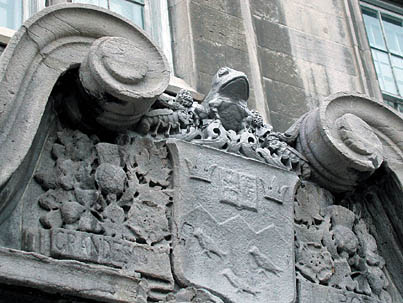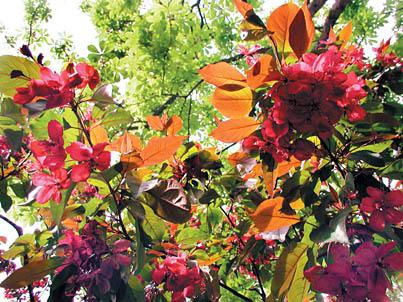
With so many historic and heritage properties, McGill has always had a reputation as a beautiful university setting. From the architecturally splendid campus buildings, to the artwork that adorns the campus, to the gardens that beautify it, there are many things to catch the eye at McGill. But there are also sequestered corners, overlooked details and forgotten architectural flourishes all across University grounds. In this series of photographs from Claudio Calligaris, we take an up-close look at some of the things at McGill that people pass by every day and may never have stopped to examine.
Ornamental frog, James Administration Building.

In the 1920s, the expanding Biology department required more space and the University erected a limestone building on the site of the old medical building, which had been lost to a fire. The McGill crest at the new building's entrance was adorned with an ornamental frog to signify the work being done inside. Eventually requiring even more space and modernized laboratories, Biology left the building in 1965 upon construction of the Stewart Biological Sciences Building on Dr. Penfield Avenue. The old building was renamed the James Administration Building after former McGill principal F. Cyril James and houses the Principal's Office, among other administrative units at McGill. For years, the frog has been a target of pranksters from other universities visiting for sports events and is frequently painted purple by Bishop's University students.
Campus trees in bloom.

Sir William Dawson is the man responsible for the trees on the downtown campus, for when he arrived on campus in 1855 he discovered what he described as a "tiny, poverty-stricken provincial school" with a "ramshackle collection of deteriorating buildings." He proceeded to lay out gardens and plant trees at his own expense. While many of Dawson's trees have not survived the ravages of time, trees have been replanted in the broad lines that he established.


